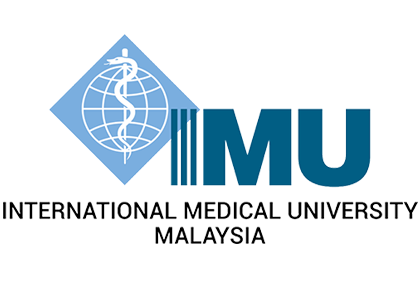

What is USMLE ?
The USMLE is the United States Medical Licensing Examinations. It is a set of qualifying examinations for medical graduates for the purpose of licensing and to obtain eligibility for US residency. A pass in USMLE means the candidate has the required competency for legally practising medicine in the US and the medical training is comparable to American standards.
What is the USMLE exam process ?
USMLE has 3 Steps:
- The Step 1 exam essentially tests Basic Sciences knowledge.
- Step 2 is on Clinical Knowledge (CK) and Clinical Skills (CS).
- Step 3 is the requirement for licensing.
The ECFMG (Education Commission for Foreign Medical Graduates)
The ECFMG is a body that conducts the USMLE exam Steps for foreign medical graduates.
What is ECFMG certification ?
A pass in USMLE Steps 1 and 2, CK and CS will confer ECFMG certification. With this certification, candidates will be eligible to apply for the US residency. Step 2 is usually done in the clinical years.
What is the value of this licensing (Step 3) exam ?
To be eligible for US residency and for practice in the US.
Who can take this exam ?
Any medical student or a medical graduate with the approval of the Medical School Dean.
What is the Step 1 & Step 2 CK exam format ?
The Step 1 and Step 2 CK exam is a computer-based test taken in a single day over an 8 or 9-hour period. It’s a multiple choice question test that includes several sections of 46 questions each for a total of 300+ questions. One hour is allotted for each of the 7 or 8 sections. It is an average of 1 minute and 18 seconds per question.
Test takers are allowed 45 minutes during the test for personal breaks. If candidates finish any section before the allotted hour is up, they can add that time to the personal break total. Several breaks are allowed in between the test.
During the test, candidates are only allowed to bring soft foam earplugs into the examination room. Nothing else is allowed – no bags, electronics, phones, or even jackets are allowed.
The test is usually conducted all over the world at different Prometric Test centres.
What are Step 1 contents?
Step 1 consists of multiple-choice questions prepared by examination committees composed of faculty members, teachers, investigators, and clinicians with recognized prominence in their respective fields. Committee members are selected to provide broad representation from the academic, practice, and licensing communities across the United States and Canada.
The test is designed to measure basic science knowledge. Some questions test the examinee’s fund of information per se, but the majority of questions require the examinee to interpret graphic and tabular material, to identify gross and microscopic pathologic and normal specimens, and to solve problems through application of basic science principles.
More info: https://www.usmle.org/pdfs/step-1/content_step1.pdf
What are Step 2 CK contents?
Step 2 CK consists of multiple-choice questions (MCQs) prepared by examination committees composed of prominent faculty members, teachers, investigators, and clinicians who make up the USMLE Test Material Development Committees. All committee members have recognized expertise in their respective fields. They are selected to provide broad representation from the academic, practice, and licensing communities across the United States and Canada.
Test questions focus on the principles of clinical science that are deemed important for the practice of medicine under supervision in postgraduate training.
More info: https://www.usmle.org/pdfs/step-2-ck/Step2CK_Content.pdf
What are Step 2 CS contents?
Step 2 CS administration will include twelve patient encounters. Candidates will have 15 minutes for each encounter where they expected to demonstrate appropriate history taking skills, physical examination skills, communication and patient interaction. Immediately after each patient encounter, there will be 10 minutes to complete a patient note.
When is the ideal time to take USMLE Steps?
Most people take Step 1 between their second and third year in medical school, after finishing basic science courses and before a clinical clerkship. Many have success taking it within two months of finishing their basic courses because the material is still fresh in their minds, combined with an extra month or two of studying. Step 2 exams are taken during or after the clinical years.
Can I retake my exam if I am not happy with my scores ?
Only if a student fails the exam can they re-take the test. If they pass the exam with low scores, they cannot re-take the test. The scores are tagged to the student for 7 years. They can re-take the test after 7 years.
What is the limit on number of test attempts ?
Any number of attempts are allowed within the 7 year period. The more attempts, the less will be the chances for a medical graduate to get into a residency.
How is the exam scored ?
Ideally, the exam is pass or fail. But with increasing competition for getting into residency, the scores matter most. Currently the Steps have 3 digit scores. The Step 1 Pass scores range anywhere from 192 to a maximum of 260. Prior to 2013 there were additional 2 digit scores and before 1999, there was percentile grading.
The pass score is exam dependent. Any student with scores of 220 and above is generally considered excellent.
How does a student prepare for these Steps ?
Option 1: No Preparation done, the student goes and attempts the Steps. It’s a high risk here. Low scores mean they cannot re-sit and improve their scores for 7 years. Except for geniuses, it is quite difficult to excel in the Steps without preparation.
Option 2: Self preparation, online free materials/books/peer support: Hard working students can achieve a good score. There are plenty of free prep materials online. Many of them may give false information. Students may not be able to take mock tests. No options for seeking guidance from experts. The scores will certainly be better with formal preparation.
Option 3: Attending commercial prep courses, online prep courses, buying USMLE prep books, practising questions, going through the learning materials: This is most often done worldwide. There are many vendors available online for USMLE prep guidance. Many are good, some are fake/not reliable. Going through the prep courses will definitely be useful and can get higher scores. The courses can be expensive. A Step 1 course for 4-6 months could be almost RM 6000-8000.
Option 4: Medical school assisted USMLE prep programme. There are very few medical schools that are doing this. The advantage is that the prep courses blend through the medical curriculum and helps the students identify the USMLE Step learning through their medical years. The medical school faculty and the prep programme experts can be there to guide students when needed.
What if I appear for USMLE test without enroling for any prep programmes ?
See options 1 and 2 above. Prep programmes are not mandatory. Students may pass the Steps. But higher scores can be achieved with suitable preparation. For FMGs, scores matter most. High scores mean better chances of getting desired residency programme.
Can any prep programmes guarantee high scores ?
No. Prep programmes will only assist students with additional teaching-learning materials, recorded lecture videos, live virtual lectures, mock tests, practice questions, feedback on assessments, etc.
The key mantra for success is “hard work”.
How do medical school worldwide assist students for the USMLE Steps ?
Most medical schools do not assist students in USMLE preparation. The students have to prepare by themselves and take the Steps. The medical schools in and around US (like Caribbean) where all students are mandated to sit the USMLE Steps, their curricular would prepare the students for the USMLE exams only.
The medical school dean needs to approve the student application for eligibility to sit for the USMLE Steps.
Is IMU assessment different from the USMLE Step exams?
Yes. Assessments in IMU are linked to the IMU learning outcome domains and prepares a student to achieve this. The pattern of assessment tools can be different. In IMU we have MCQs, essays, OSPE and OSCE assessments. USMLE Steps have MCQs based on clinical scenarios and linked to graduate outcomes for US.
Why is IMU providing parallel USMLE prep material for medical students?
It is an advantage for any student to be familiar with the USMLE preparation during the early medical school years. The prep materials will be additional teaching learning resource for students helping them to prepare for USMLE.
Preparing for Step 1 exams during Phase 1 (Medical Sciences) and for Step 2 during Phase 2 (Clinical Sciences) will give students more confidence as similar subjects are taught in the curriculum. Preparing for USMLE Step exams after graduation may require students to put in more efforts in terms of time and money.
Preparing and passing the USMLE Steps will allow students to be ECFMG-certified and allow them to be eligible for US residency programmes. IMU is providing this opportunity for our medical students so that they will have additional pathways to pursue post-graduation from US if the students are ECFMG certified.
What is the provided USMLE prep material?
The materials include learning resources like text material, online library resources, learning cards, multimedia files, question bank, mock tests, etc. The access shall be from semester 1 to 10.
How is the USMLE prep course linked to IMU different from other available online courses?
The online USMLE prep materials will allow students to learn alongside the IMU curriculum. The students can have the opportunity to discuss and get feedback from IMU faculty when needed. There will be opportunities to take customised tests based on what students learn in the IMU curriculum.
Will enrolling into USMLE prep courses guarantee better grades?
To achieve better grades, students need to work hard and make the best use of the facility. With quality prep materials and good preparation during the medical course, students can achieve better scores.
Can I take the prep course and not sit the Step 1 exam?
Yes. The contents are enhanced learning materials that supplements students’ understanding during medical course. Effective use of these materials can prepare students towards taking USMLE steps. It is advisable for students to take the Step 1 exams while they are in Phase 1 and Step 2 tests towards the end of clinical phase.
Is there any benefit for IMU Alumni and current IMU students overseas in partner medical schools (PMS) with this preparatory course?
Please email us to obtain more details at [email protected]
© 2024 IMU University. All Rights Reserved. Sitemap


